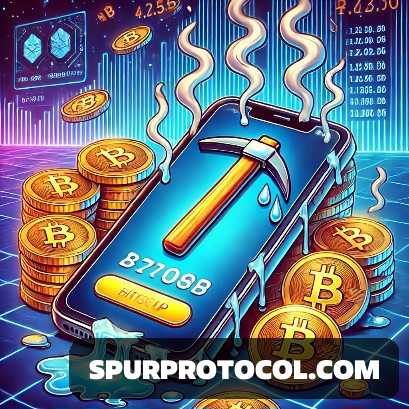The Rise of Tap-to-Mine: How Crypto Mining Went Mobile
Once upon a time, crypto mining meant rooms full of humming computers, piles of tangled wires, and electric bills that could make a grown man cry. But today? Mining can be as easy as tapping a button on your phone. No loud fans, no overheating laptops—just a simple boop on an app.
Welcome to the world of mobile crypto mining, where projects like Pi Network, Bee Network, and Omega are redefining what it means to “mine” coins. But how did we get here? And is this the future of mining, or just a fancy game of virtual gold rush?
Back in My Day, Mining Was Hard Work
Back in the good old days (okay, like 10 years ago), mining crypto required serious power. Bitcoin miners used computers with the strength of a thousand smartphones, solving insanely complex math problems to secure transactions. It was like running a 24/7 marathon—except instead of medals, you got digital coins.
Then came Ethereum mining, where gamers cried as powerful GPUs were snatched up by miners. And soon, mining farms in giant warehouses took over, making it nearly impossible for regular people to compete.
The Mobile Mining Revolution
Enter mobile mining. Not the old-school kind, where your phone would melt in your hand trying to mine Bitcoin. No, we’re talking about a new breed of mining—one that doesn’t drain your battery or cook your fingertips.
Instead of using brute force, mobile mining projects rely on trust-based participation and social connections. Take Pi Network, for example. Instead of solving math puzzles, you “mine” by pressing a button once a day. No electricity bills, no expensive hardware—just a friendly reminder to keep your streak going.
Other projects, like Bee Network and Star Network, follow the same model. They focus on community growth and engagement, rewarding users for inviting friends and staying active. Some even have nodes (real computers that help run the network), but the average user just taps a button.
Is This Real Mining or Just a Fancy Game?
Purists will argue, “If it doesn’t melt your GPU, it’s not real mining!” And sure, mobile mining isn’t like Bitcoin mining. But it still serves a purpose.
These projects use consensus algorithms like the Stellar Consensus Protocol (SCP) or Proof of Engagement rather than Proof of Work. Instead of competing for rewards, users help validate the network by simply proving they exist (and pressing that oh-so-important button).
The Good, the Bad, and the Tap-Happy Future
So, is mobile mining the future? Well, it depends.
The Good:
• No energy waste – No more burning coal to make digital coins.
• Accessible to everyone – If you have a smartphone, you can join.
• Fun and engaging – Who doesn’t love a daily button tap?
The Bad:
• Not all projects will succeed – Some may never reach a true “market value.”
• Centralization risks – Many mobile mining projects still rely on the team running them.
• Requires patience – If you’re expecting overnight riches, think again.
Final Tap: Is Mobile Mining Here to Stay?
While mobile mining may not replace traditional crypto mining, it makes digital currency more accessible. Instead of competing with supercomputers, everyday users can be part of a network with just a few taps.
Will the new project models of today make it big? Only time will tell. But one thing’s for sure: mining has never been this easy—or this fun. So go ahead, tap that button, and feel like a crypto miner without breaking a sweat.
Just don’t forget to charge your phone.
